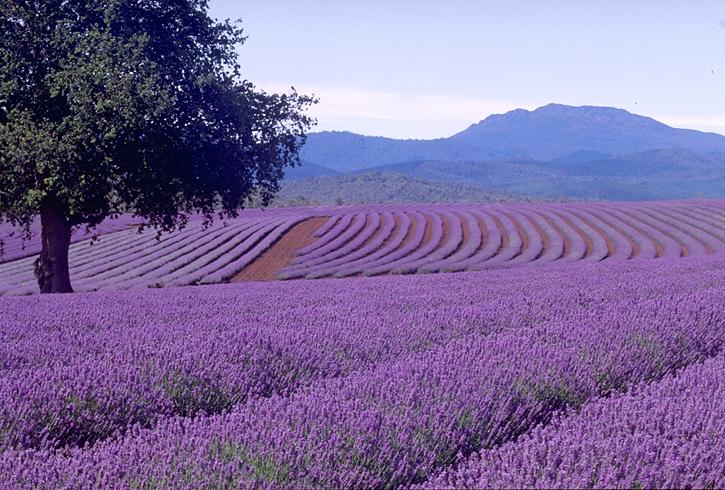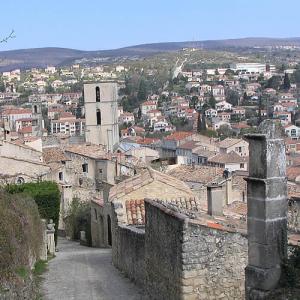Provence was in ancient times one of Rome's favorite provinces. It is full of vestiges that testify to the importance it had within the Empire.
The light intensifies the splendor of the ocher and green colors of the region, the yellow of the sunflowers and the purple color of the lavender flowers. The atmosphere smells of flowers and it is no coincidence that the center of France's perfume trade is the mountain town of Grasse.
One of the elements that characterize the region of Provence is the Lavender flower, immense fields of violet tones populate the landscape and during the summer its aroma intoxicates visitors.

I propose a most interesting route to do in summer, when the fields where lavender is grown are at their peak. There are festivals dedicated to this plant, parades of floats full of flowers, artisan stalls where you can buy honey, perfumes, soaps, etc. And lavender distilleries and museums open their doors to visitors.
The journey could start in Orange, then going to Vaison-la-Romaine, and to towns such as Sault, Forcalquier and ending in Manosque, a total of about 150 kilometers, the duration of the route can be lengthened, since if we visit cities like Orange or Vaison-la-Romaine, or if we want to stop to enjoy the magnificent lavender landscapes, we'll need more time.
The city where we start the tour is full of ancient monuments such as the Roman theater, the triumphal arch and the walls, it is a city built following the Roman theater, the triumphal arch and the walls, it is the classic model of a Roman city.
Vaison-la-Romaine is the Next stop on the route, you have the largest archaeological site in France with some of the most beautiful monuments in Provence. It has the remains of Roman residences, a Roman theater, a museum and magnificent gardens.
Sault It is located east of Mont Ventoux, on a hill at an altitude of 776 meters. It is a city with a rich historical heritage, it has been awarded the title of world heritage by UNESCO. If you visit the Ferme aux Lavandes, you can see the lavender farms and buy different products, jams and lavender honey, teas, perfumes etc.
Forcalquier It is located between the Lure mountain and the Luieron massif. In the center of the city there is a series of fortifications called La Ciudadela. The historic center is made up of a series of streets and small squares that transport us to another era. Among its monuments are the Notre-Dame du Bourguet cathedral, the Cordeliers convent or the Saint-Jean church.
Manosque It is the end of the proposed route is built on a slope in the hills of the eastern Luberon. Its old town is typically Provencal, the gates that in the past gave access to the city, the Romanesque-style Saunerie gate and the Soubeyran gate stand out. Other monuments to consider are the Saint-Sauveur church, in the Romanesque-Gothic style and the Notre-Dame de Romigier, in the Romanesque style.
The best time to do this tour would be at the beginning of July, when the fields are in their splendor, both for the color of the flowers and for the aroma they give off. It is a trip that is always repeated, due to the amount of landscapes and monuments that cannot be seen in a single visit.
It is advisable to carry a camera with large capacity memory cards.



I like the proposal.
They have told me about the Roman monuments in the area, especially about an aqueduct that is very visited.